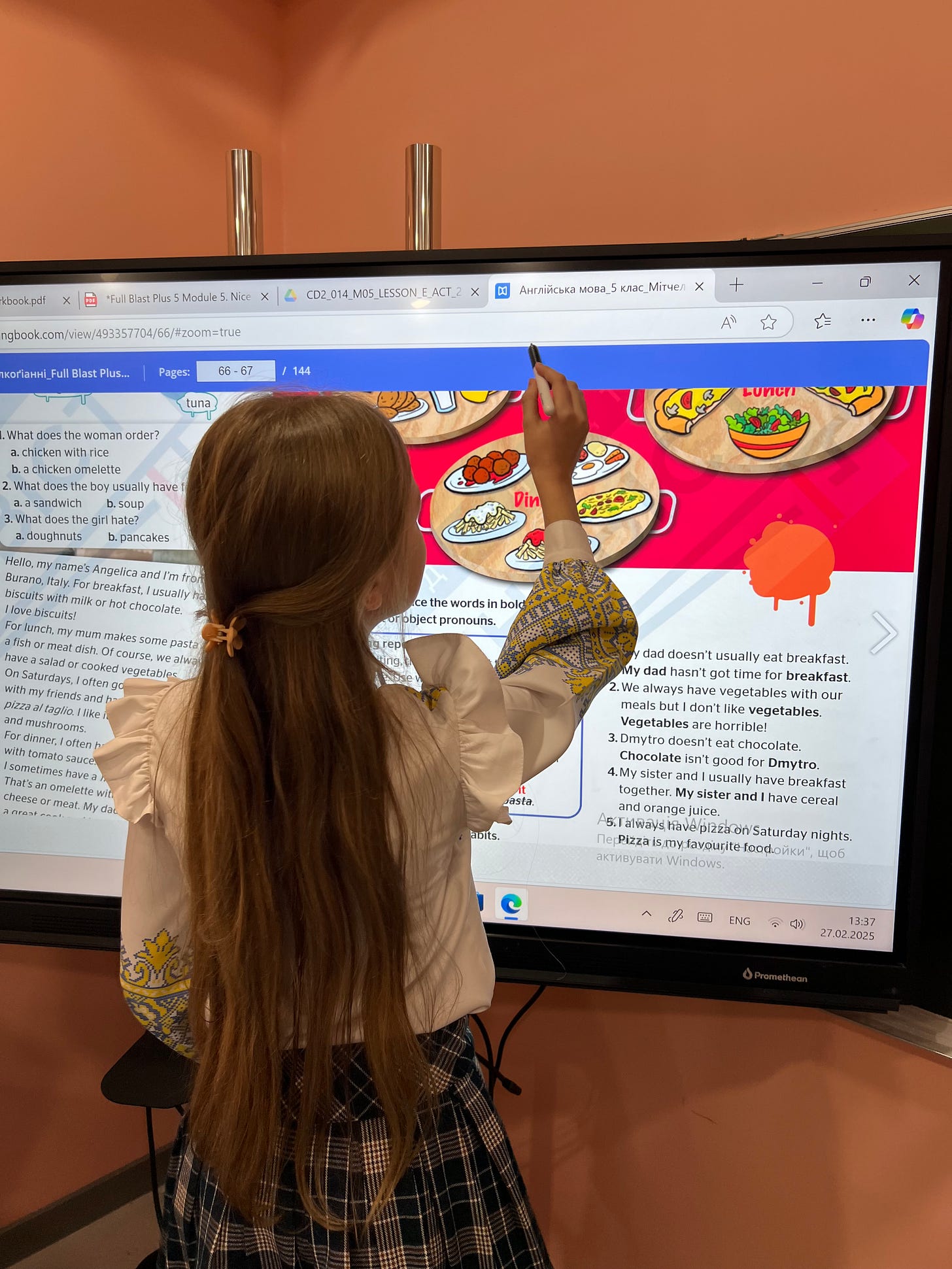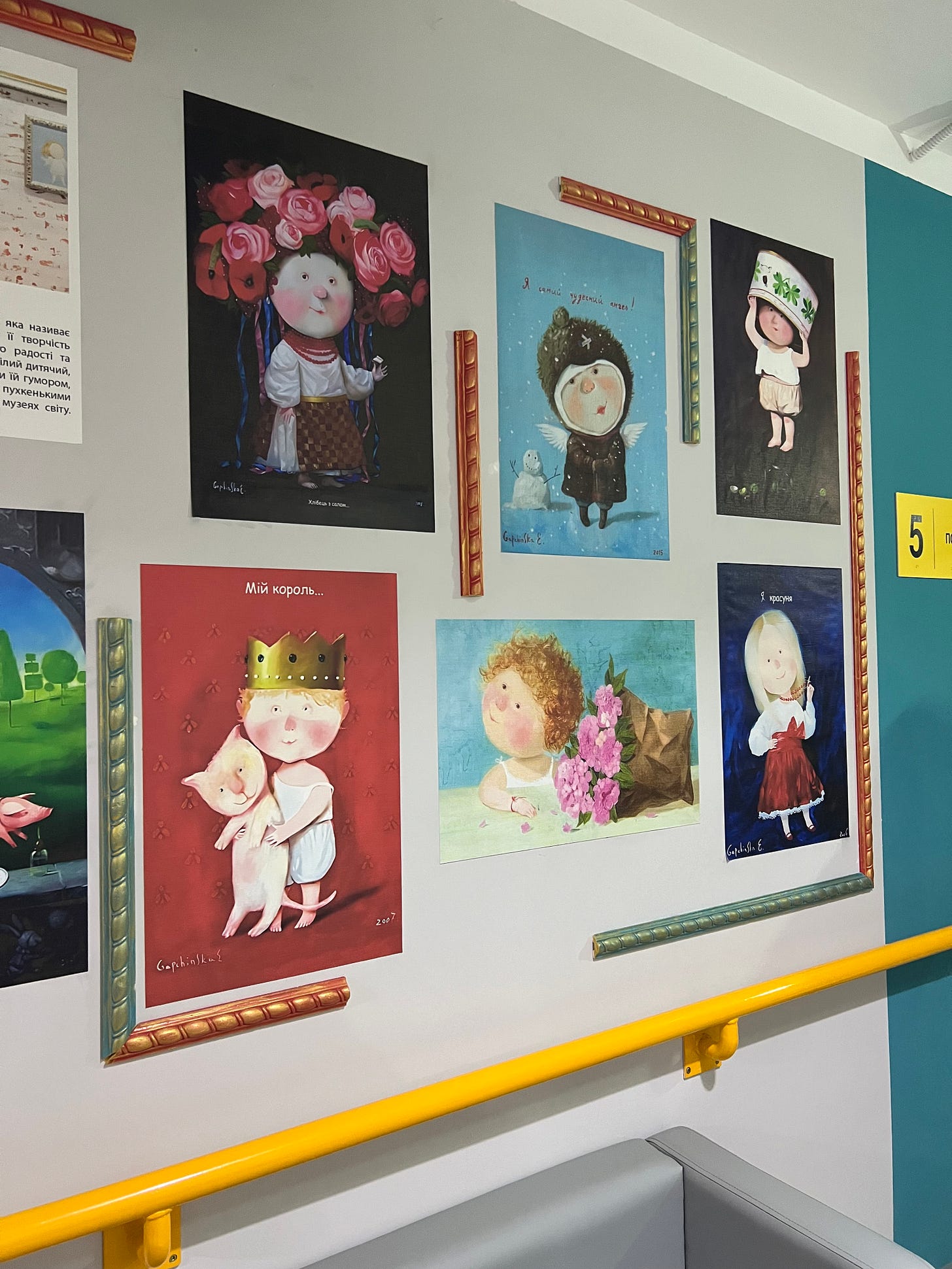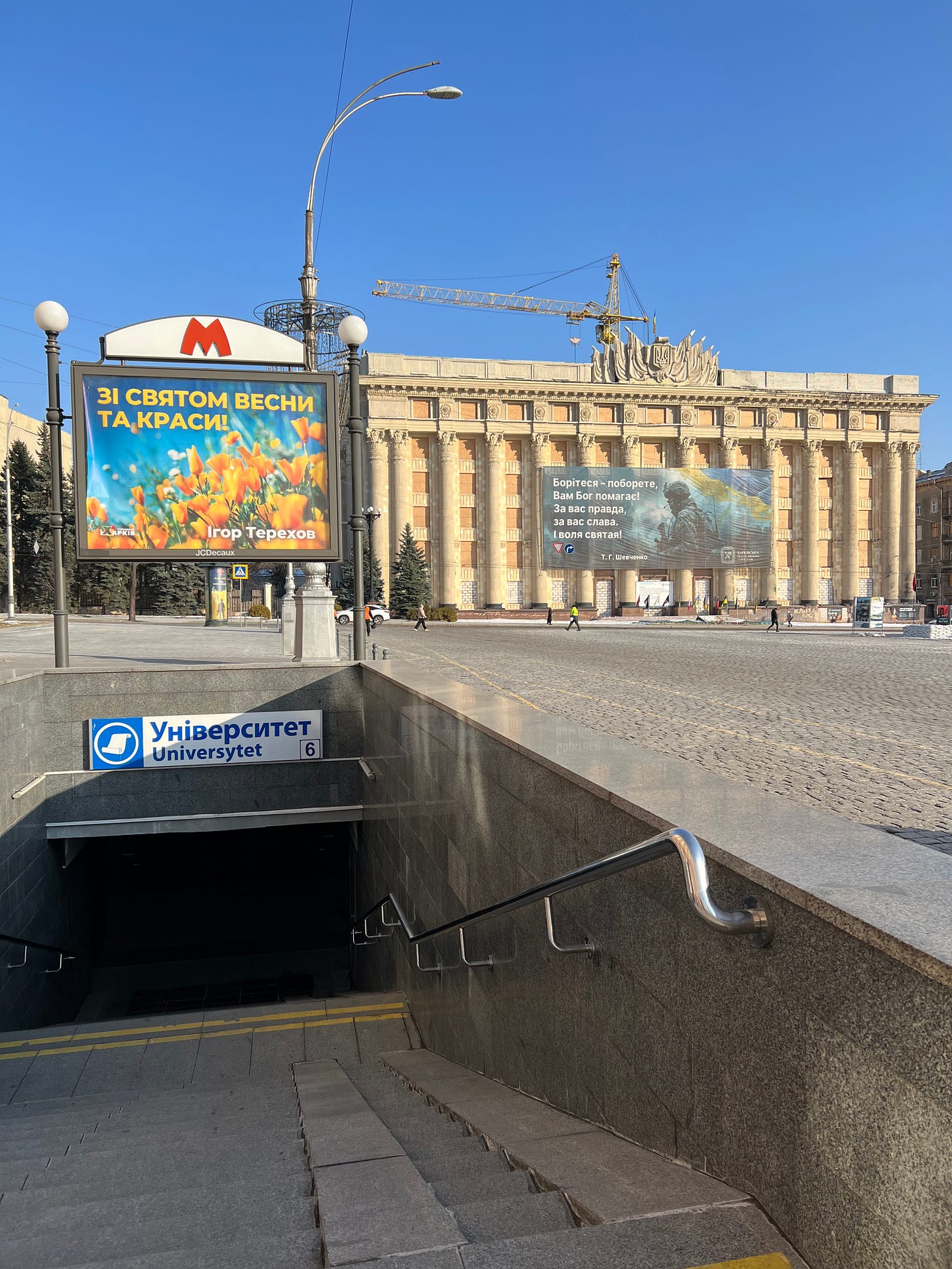Learning underground
Several metres below ground in Kharkiv, hundreds of children are having lessons in specially built underground schools - their first in person classes since the full scale war began.
In a bunker, opposite a highschool on the outskirts of Kharkiv, an entire school has been built, several metres below ground. We are welcomed at the entrance to the bunker by the school principal and the local education chief, who beckons us, smiling, through the reinforced metal door. We walk down flights of steps, deep below ground, to a place safe from missiles and drones. There’s even a special stairlift for children with disabilities to get down there. This is the first chance for three years that these students have been able to attend school in person - and before the full scale war there was two years of disruption during Covid. It is a miracle that they can sit in classrooms now, alongside their friends.
At the bottom of the steps, past a security guard, there is the underground school, one of four which have been purpose built so far, an astonishingly ambitious project in a city which is under constant bombardment. Although there are no windows and no natural light, it feels bright and cheery: drawings and pictures adorn every wall. Each classroom is decorated with a different theme, according to the lessons which are taught there. We see one decked out with a big relief map of the world, where children have pinned flags where they have been, a glimpse of the former life, when families went on holiday together - and also a physical reminder of the diaspora of Ukraine’s refugees.
One room is dedicated to London, with red phone boxes and Big Ben, while one has a wall of Ukrainian embroidery and national symbols. This being a highly traumatic time for Kharkiv children - who may well have fathers on the front lines, and have to cope with the terror of daily Russian attacks, there is a special room for anyone who feels stressed or scared, bathed in a calming purple light, with a psychologist on hand at all times.There were also specific safety measures, including sprinklers and fire alarms, and two entrances and exits at either end of the structure. There is even an anti radiation protection system.
We look in on a couple of the lessons. One group of children is learning English and they chorus ‘Hello, how are you?’ at us, while one small girl, ribbons in her hair, is at the whiteboard in the front of the class, selecting items which would appear in a traditional British breakfast. Many of the girls are wearing traditional embroidered vyshyvanka blouses, while one boy is sporting a bow tie and a neat blazer, jumping up when he sees us to show it off. The school has been largely equipped by funding from USAID, which has now completely dried up, after the agency was shuttered by Donald Trump. They have lost around 75% of the money they were expecting to kit the school out with computers and lab equipment, but they insist they will manage, the old fashioned way.
I caught a few words with one of the teachers, who lived in Washington DC for a few years when her husband was seconded to the Ukrainian embassy. He is now serving in the armed forces, while the family lost their home in Kupyansk, a frontline town which has been mostly destroyed by Russian bombing. They moved to Kharkiv, along with many thousands of displaced people who were forced to flee areas closer to the Russian border, but she was excited and happy to be back in a classroom again, teaching in person after so many years on the end of a computer screen.
A bell rang for break time, and the corridors were suddenly full of children rushing to their next class, or to the bathrooms decorated with giant cartoon cats for girls, dogs for the boys. We had a quick look in a large space where kids could hang out after class, or put on assemblies or drama shows, and were shown into a brightly coloured cafeteria. There were inviting trays of vatryushka curd cheese buns, and slices of bread with cheese or ham, and hot sweet cups of tea, although there was little time to linger before our next visit, the city’s first underground school, which was constructed in the Universityet metro station.
Another security guard was stationed at the entrance to the school, one of five built in metro stations, ingeniously arranged along the other side of a corridor separating it from the train tracks. There was WiFi access, temperature controlled heating and ventilation, and although there wasn’t much that could be done about the harsh strip lighting, the walls inside the classrooms were decorated with posters and drawings. There’s even a treasure hunt through the maze of corridors which lead to the bathrooms. The school principal throws open some shutters opposite the classrooms, so that we can see down to the subway station, as a train draws in, and passengers crowd on board: it seems a world apart.
This Metro school hosts children from different city districts who study here in rotation, allowing more of them to get a turn in the classrooms - there are only enough places to teach a fraction of the city’s 52,000 school students at a time. The rest are still having to study online. The atmosphere is calm and orderly, although one cheeky young boy writes ‘HELP ME’ on a sheet of paper and presses it to the glass as we peer through the window into his classroom, although he is giggling too much to keep it straight.
The bell rings again, the end of the school day, and the children surge into the corridor and clatter up the stairs, through the hallway and back onto street level, where they are swiftly ushered onto school buses waiting near the entrance. These underground schools cost millions of pounds to construct - and it is only thanks to international governments and donors that it’s been possible to create so many. The loss of the USAID money will have to be offset somehow, in the drive to build at least eight more schools by the end of next year. But when you see the smiling faces of these children, and their teachers, so happy to be in proper classrooms, interacting with their friends, it seems a small price to pay to offer this generation of children some kind of normality, their young lives overshadowed by war.








Thanks for this. By chance, I just visited an underground school in Zaporizhzhia - and am heading for another one tomorrow. It's good that kids are getting schooling.
Great story about how Ukraine keeps teaching children .and making schools out of nothing .I loved the whole story and pics .Thank you for that ,Felicity . Hugs and i hope soon peace to all in Ukraine